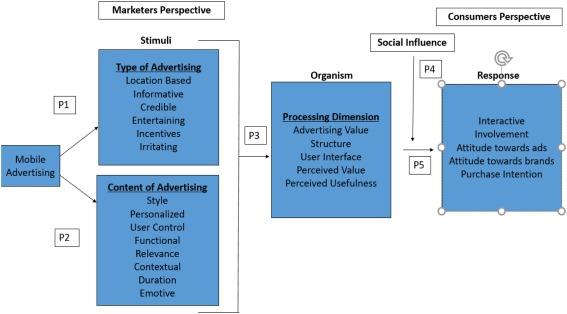Real-World Case Studies: Proven Inclusion Strategies That Deliver Results
Inclusion strategies have become essential to organizational success in today’s diverse and fast-paced work habitat. While many businesses strive for inclusion, only those with robust, actionable plans see real impact. This article explores proven inclusion strategies through real-world case studies, offers practical tips, highlights benefits, and presents firsthand experiences from organizations that champion diversity and inclusion. Whether you’re an HR professional, a business leader, or an inclusion advocate, you’ll discover valuable insights that help drive meaningful change and deliver measurable results.
Why inclusion Strategies Matter: The Benefits
- Enhanced Innovation: Diverse teams bring unique perspectives, sparking creativity and driving innovation.
- Higher Employee Satisfaction: Employees who feel included are more engaged, leading to lower turnover rates.
- Improved Reputation: Organizations known for proven inclusion strategies attract top talent and loyal customers.
- Broader Market Reach: Inclusion allows businesses to connect with and serve a wider variety of customers.
- financial Growth: Studies consistently show that inclusive companies outperform their peers financially.
Implementing inclusive practices isn’t just the right thing to do—it’s a strategic imperative for organizations seeking lasting success.
Common Inclusion Strategies That Deliver Results
Organizations utilize numerous tactics to ensure workplace inclusion. Some proven inclusion strategies include:
- Bias Training and Awareness: Regular workshops help employees recognise and overcome unconscious biases.
- Employee Resource Groups (ERGs): ergs provide support for underrepresented groups and foster a sense of belonging.
- Inclusive Recruitment Practices: Adopting blind recruitment and outreach to diverse job boards widens the talent pool.
- Flexible Work Arrangements: Accommodating different needs, such as remote work or adaptive schedules, boosts inclusion.
- Mentorship and Sponsorship Programs: Investing in the growth of minority employees ensures fair career advancement.
- Accessible Physical and Digital Environments: Ensuring both online platforms and offices are accessible to all.
Case Studies: Proven Inclusion Strategies in Action
Case Study 1: Microsoft – Inclusive Product Design
Microsoft prioritizes diversity and inclusion by incorporating universal design principles across its products. The company actively seeks input from users of varying abilities and backgrounds during product progress. This approach led to innovations like the Xbox Adaptive Controller, which garnered widespread acclaim and improved gaming accessibility for millions.
Result: Increased user engagement and positive brand reputation.
Case Study 2: Accenture – Building a Culture of Inclusion
Accenture established inclusive leadership training programs and embedded diversity metrics into management performance reviews. These strategies ensured accountability and consistent progress. The formation of employee networks and visible executive support for LGBTQ+ rights further strengthened inclusion.
Result: Employee surveys revealed a important rise in job satisfaction and retention among underrepresented groups.
Case Study 3: Sodexo – Gender Balance and Empowerment
Sodexo implemented the Gender Balance initiative, setting clear targets and monitoring progress. Through mentorship, open dialogue, and training, Sodexo increased female portrayal in leadership from under 20% to over 35% within a few years.
Result: Enhanced financial performance and improved workplace culture.
Firsthand Experience: Inclusion Strategies from the Ground Up
Employees and managers from various sectors share their stories of what worked:
- Anonymous Feedback Channels: “When we introduced anonymous feedback and whistleblowing protocols, employees felt safer voicing concerns. Management could rapidly address issues and improve our workspace.”
- Cultural Celebrations: “Organizing regular cultural awareness days and language exchanges opened conversations and broke down barriers across teams. suddenly, colleagues were more willing to collaborate.”
- Accessible Meeting Tools: “Switching to video conferencing platforms with live captioning made meetings accessible for hearing-impaired staff, ensuring everyone’s participation.”
These firsthand experiences highlight that every organization,regardless of size,can uncover unique opportunities for fostering an inclusive environment.
Practical Tips to Implement Proven Inclusion Strategies
1. Involve Leadership at Every Step
Commitment from leadership is critical. Ensure executives and managers visibly support and participate in inclusion efforts.
2.Measure, Monitor, and Share Results
Set specific inclusion goals, monitor progress through regular surveys or audits, and share successes and challenges with your team.
3. Create Safe Spaces for Dialogue
Foster open discussions around diversity and inclusion.Encourage employees to share feedback without fear of retaliation.
4. Offer Education and Training
Host workshops on unconscious bias,inclusive language,and cross-cultural communication. Make these accessible to everyone.
5. Review and Update Policies
Regularly revisit hiring, promotion, and accessibility policies to keep pace with best practices and legal requirements.
How to Maintain and Evolve Inclusion Strategies
Proven inclusion strategies require ongoing attention. Organizations should:
- Solicit continual feedback from staff at all levels.
- Stay updated on legal and societal shifts regarding inclusion.
- Invest in professional development and resources for underrepresented groups.
- Celebrate milestones in inclusion regularly to inspire further progress.
The journey toward a truly inclusive workplace is ongoing and evolves alongside the organization.
Conclusion: championing Proven Inclusion strategies
The case studies and strategies shared here prove that effective inclusion isn’t a destination,but a continuous process. Organizations that champion diversity and inclusion not only maximize employee potential, but also realize significant business gains. By customizing proven inclusion strategies to your workplace and actively maintaining them, you can foster an environment where everyone feels valued and empowered. Start today, measure your impact, and watch diversity and inclusion deliver extraordinary results for your team and your organization.

